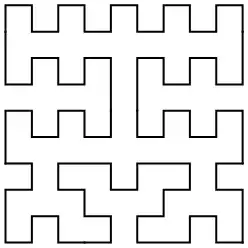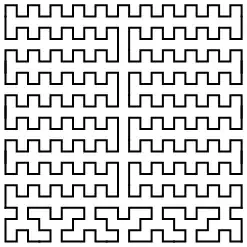This question comes from a comment on this older question about the maximum number of turns in a Hamiltonian path, on an $n \times n$ lattice. @Joseph Malkevitch asked if the results could be extended to Hamiltonian cycles.
If $n$ is odd then you cannot construct a Hamiltonian cycle on an $n \times n$ graph. This can be demonstrated by labeling the vertices from left to right and top to bottom, on an odd $n \times n$ lattice from $1,2,3…n^2$. Select the set of even numbered vertices, $S$. Then, $\kappa (G-s)= \frac{n^2+1}{2}\gt |S|=\frac{n^2-1}{2}$ which disproves the existence of a Hamiltonian cycle.
If $n=0$ mod$4$ then you can exploit the symmetry of the maximal Hamiltonian cycle to show that the maximum number of turns possible in a Hamiltonian cycle is $n^2-n$
I haven’t been able to make much progress in the case where $n=2$ mod $4$, either in terms of creating a constructive algorithm or identifying a likely polynomial in terms of $n$.
Actual Question. What is the maximum number of turns in a Hamiltonian cycle on an $n \times n$ lattice graph with $n=2$ mod $4$?
 $\hskip 0.5 in$
$\hskip 0.5 in$ 